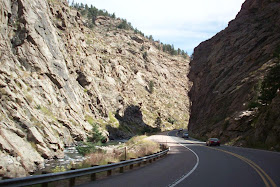
Once you’ve established a known destination, if and when it becomes necessary for you to “bug out”, you will need to determine your best route of travel. Once you’ve established your plan enabling you to “know where to go and go where you know”, your next decision is to figure out which way to get there is the best option for you and your family. You do not want to wind up in a situation where someone says “You can’t get there from here!” Here is a guideline for planning the next step of your “bug out”.
The Route of Travel
You should always have at least three ways to get to your known destination. Never rely upon a single route of travel which may not be viable in an emergency or crisis. If or when something goes wrong, you could be leaving yourself in a very vulnerable position and subject to circumstances beyond your control.
The
1.) Your primary route of travel should be the quickest and most direct route from your starting point to your known destination. It will also be the one that will probably be used by many others besides you. In this case, time is once again your enemy. The earlier you are able to leave; the better your chances will be for safely reaching your known destination by your primary route.
The
2.) Your secondary route of travel is the one you will need if your primary route of travel becomes too congested, obstructed or no longer a viable option for safe travel. This will be your main backup route of travel. The secondary route of travel should still be a fairly direct route to your known destination and one that will enable you to still reach your known destination in a decent amount of time. It should also offer several access points along the route that will allow you to reach it from your primary route of travel should a detour become necessary.
The
3.) Your alternate route of travel is the backup for your primary and secondary routes of travel. This is an additional route of travel should your primary or secondary routes of travel are no longer a viable option. It is sometimes referred to as “the road less traveled” and for a very good reason. It will probably be a very indirect route and require a substantially longer time for you to reach your known destination safely.
Got detour?
Staying above the water line!
Riverwalker

I read this blog almost daily and have never posted a comment before. Having alternate routes to a bug out location is sound advice.
ReplyDeleteHaving experienced many major hurricanes in several staes including Hugo in Charleston and Katrina here in south Mississippi. I recommend shelter in place if possible and if not then you should be able to get to your bug out location on half a tank of gas. If that is not possibel then you need to be at your location before the rest of the folks get panicked. The evacuation routes from cities will be bumper to bumper and refueling will not be an option as most stations will run out quickly. Small towns will not be receptive of outsiders and your fellow travelers are in survival mode. The criminal element loves this as evidenced by the rapes and robberies of many evacuees after Katrina that were grossly under reported.
To: anonymous 9:41
ReplyDeleteGlad you took some time to leave a comment. I agree that sheltering in place should be your first option to consider but it's not always possible to do so.
During Katrina the interstate North of my location had both sides going in one direction only and there were as many cars on the side of the road as there were on the highway itself.
Even my secondary route was useless and I had to resort to my alternate route (the one less traveled). A normal one hour trip took almost three hours to complete but I was able to reach my known destination safely though.
Thanks for the great input and feel free to leave more comments!
RW